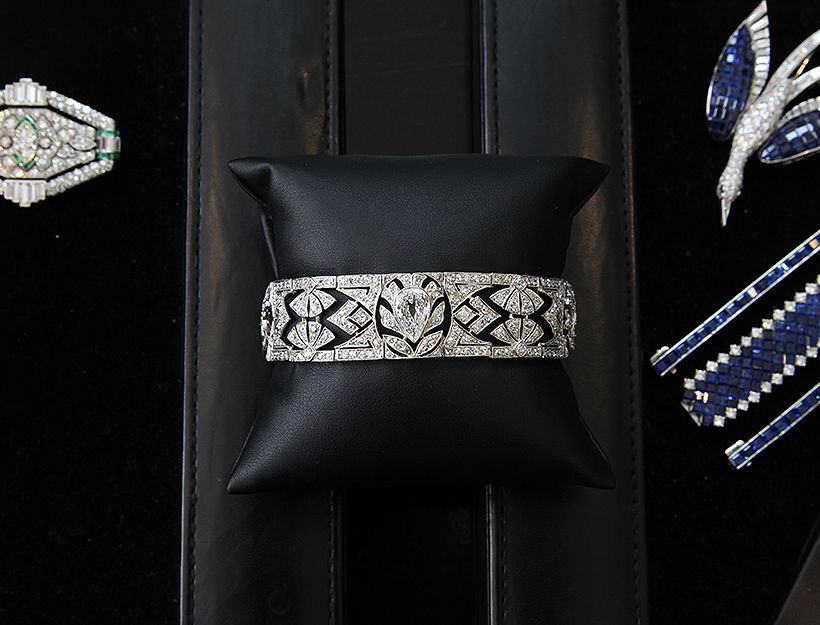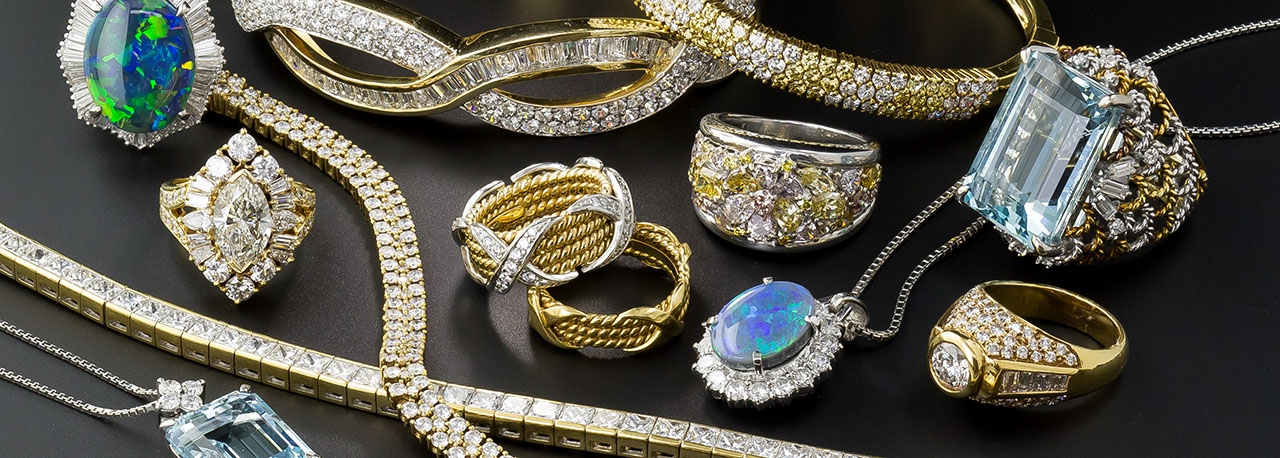Reveal the Rich Background Behind Stunning Estate Jewelry Collections
The expedition of estate jewelry collections provides a distinct home window right into history, disclosing the intricate relationship in between workmanship and cultural advancement (estate jewelry austin). Each item is not merely a testament however an accessory to the creative motions and societal values of its time, from the luxuriant details of the Victorian period to the structured beauty of the Mid-Century Modern. As we check out these amazing artefacts, we reveal tales that transcend generations, prompting us to consider not just their charm, however the lives they have touched and the moments they have witnessed. What tricks might these collections still hold?
The Beginnings of Estate Precious Jewelry
Exactly how did estate precious jewelry come to embody the rich history and artistry of lost ages? The beginnings of estate precious jewelry can be traced back to different durations of workmanship, where fashion jewelry was not simply an accessory but a reflection of societal values, technological advancements, and artistic expressions. Each piece informs a tale, frequently connected with the lives of their previous proprietors, enveloping personal stories alongside historical contexts.
The term "estate jewelry" generally describes used pieces, often from substantial periods such as Victorian, Art Nouveau, or Art Deco. These items were created with thorough focus to detail, showcasing the ability of craftsmens that made use of products like gold, silver, and precious gems. Unlike contemporary fashion jewelry, estate pieces commonly feature special styles that highlight the aesthetic appeals of their time, thus working as substantial web links to the past.

Remarkable Layout Eras
Throughout history, several notable layout periods have actually considerably influenced the development of estate jewelry, each characterized by unique styles, materials, and cultural contexts. The Georgian age (1714-1837) noted the beginning of detailed designs, typically featuring nature-inspired motifs and making use of materials like gold, silver, and gemstones established in fancy setups. Following this, the Victorian era (1837-1901) introduced charming themes, with nostalgic fashion jewelry and innovative methods such as using enamel and cameos.
The Art Nouveau period (1890-1910) celebrated natural types and the elegance of nature, making use of materials like opals and pearls in flowing styles. This was succeeded by the Art Deco period (1920-1939), which embraced geometric patterns, strong colors, and lavish products such as platinum and diamonds, mirroring the modernist spirit of the moment.
The Mid-Century Modern age (1940-1960) showcased streamlined designs and making use of unusual materials, emphasizing minimalism and capability. Each of these ages not just reflects the creative movements of their time however likewise envelops the social values and technical improvements that formed fashion jewelry design, making them a fascinating topic for enthusiasts and chroniclers alike.

Famous Estate Precious Jewelry Collections
The rich history of estate fashion jewelry is perfectly exemplified by numerous renowned collections that display the creativity and craftsmanship from numerous layout eras. One of the most well-known is the Cartier Collection, which shows the luxury and advancement of the iconic French jeweler. Pieces from this collection commonly feature detailed designs and splendid gems, highlighting the brand name's dedication to fine workmanship.
An additional notable collection is the Lady of Windsor's fashion jewelry collection, which comprises several distinct pieces, consisting of the renowned "Windsor" arm band. This collection not just exhibits the elegance home of the Art Deco period however additionally carries an abundant narrative of love and loss, as it belonged to Wallis Simpson, that notoriously wed Edward VIII.
The collection of the late starlet Elizabeth Taylor likewise stands out in the realm of estate jewelry. With many pieces created by popular jewelry experts like Bulgari and Cartier, her collection embodies glamour and class, highlighting her individual style and affinity for distinct gems.
These renowned estate precious jewelry collections act as a testament to the long-lasting appeal of fine jewelry, providing understanding into the artistic and social movements that shaped their development.
The Cultural Relevance
Estate jewelry collections hold extensive cultural importance, mirroring not just the aesthetic worths of their corresponding periods but also the social and historical contexts in which they were developed. Each item commonly embodies the workmanship and artistic trends of its time, showcasing the evolution of layout and modern technology in precious jewelry production.
Furthermore, these collections serve as tangible web links to social customs and routines. Wedding celebration bands and heirloom brooches may signify love and familial bonds, while pieces decorated with particular gems can stand for local or cultural identifications. The products used-- whether gold, silver, or priceless rocks-- frequently tell tales of profession, expedition, and the wide range buildup of cultures.
Furthermore, estate precious jewelry can operate as historical artifacts, providing understandings right into the lives of people and the social standards they navigated. The method precious jewelry was used and valued can expose much concerning gender duties, status, and individual expression within differing social landscapes. Because of this, estate fashion jewelry goes beyond simple embellishment, serving as a rich story of human experience, virtuosity, and social heritage, important source welcoming modern target markets to engage with the past in a purposeful method.
Caring for Your Estate Pieces
Caring for estate jewelry pieces needs a thoughtful approach to ensure their longevity and preserve their distinct qualities. Always clean estate precious jewelry using a soft, lint-free cloth after each wear to get rid of oils and dirt.
Storage space is similarly essential; shop pieces separately in a fabric-lined box to stop tangling and damaging. Take into consideration making use of anti-tarnish pouches or fabrics for silver things, as this helps to decrease the tainting process. Additionally, prevent subjecting precious jewelry to extreme moisture, extreme temperature levels, or straight sunshine, which can adversely affect gems and metals.
Consulting a jeweler experienced in vintage or antique pieces can provide customized care alternatives. By applying these practices, collection agencies can preserve their estate fashion jewelry's historic and aesthetic value, guaranteeing these pieces proceed to be cherished for generations to come.
Verdict
In conclusion, the expedition of estate precious jewelry collections reveals a tapestry of imaginative expression and cultural significance, reflecting the worths and aesthetics of various historical durations. Each piece acts as a testimony to exceptional craftsmanship and the stories of those that once had them. Recognizing the beginnings, design periods, and remarkable collections boosts appreciation for these artifacts, stressing their function in preserving cultural heritage and motivating continued stewardship and look after these exceptional prizes.
The expedition of estate jewelry collections provides a distinct home window into history, disclosing the detailed relationship in between workmanship and cultural advancement. The origins of estate precious jewelry can be traced back to numerous durations of workmanship, where fashion jewelry was not just an accessory yet a reflection of social values, technological innovations, and creative expressions.The term "estate fashion jewelry" generally refers to pre-owned items, often from considerable eras such as Victorian, Art Nouveau, or Art Deco.The rich history of estate precious jewelry is wonderfully exhibited by a number of here are the findings popular collections that showcase the artistry and craftsmanship from various style eras.In verdict, the expedition of estate jewelry collections exposes a tapestry of artistic expression and cultural value, reflecting the values and aesthetic appeals of various historic periods.